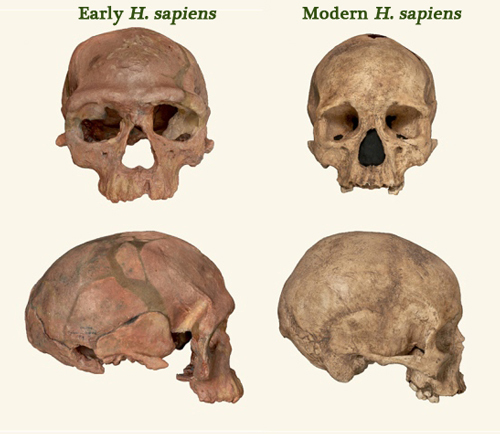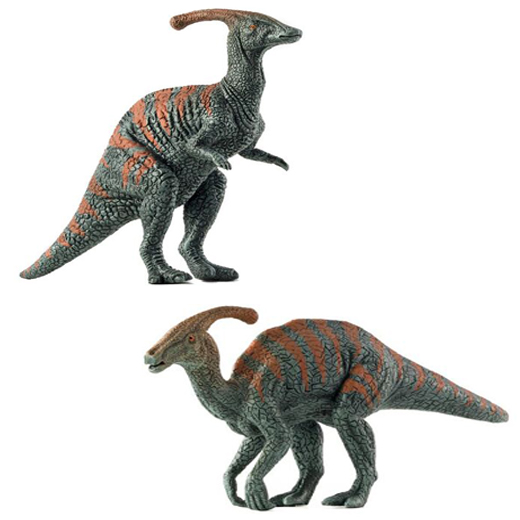Fossils Rewrite the History of our Species
Pushing Back the Origin of our Species by 100,000 Years
Fossil hominin remains from the Atlantic coast of Morocco indicate that our species Homo sapiens originated at least 100,000 years earlier than previously thought. In addition, this north African discovery challenges the idea of eastern Africa as being the “cradle of humankind” – at least in terms of the evolution of our species.
An Early Human Skull Compared to a Modern Human Skull (Homo sapiens)
Picture Credit: Natural History Museum (London) with additional annotation by Everything Dinosaur
Writing in the academic journal “Nature”, scientists that include lead author professor Jean-Jacques Hublin (Department of Human Evolution at the Max Planck Institute for Evolutionary Anthropology in Leipzig, Germany), have studied the fragmentary fossilised remains of five early humans and dated these remains to approximately 315,000 years ago. Previous studies, had suggested that our species originated some 200,000 to 220,000 years ago.
Rewriting the Textbooks
Sixty miles west of the Moroccan city of Marrakesh, the remote cave site of Jebel Irhoud can be found. The cave roof may have collapsed long ago, but this location has provided extremely important evidence about life in the Pleistocene Epoch. This notable anthropological site was discovered in 1960, with the first extensive field work being undertaken a year later. The limestone cave site has yielded a number of fossils of prehistoric mammals as well as bones and stone tools associated with both Neanderthals and our own species. According to scientists, this new study indicates that the idea that our species evolved in eastern Africa is no longer tenable. It is more likely that H. sapiens evolved all across the continent.
Professor Hublin stated:
“It is not the story of it happening in a rapid way in a “Garden of Eden” somewhere in Africa. Our view is that it was a more gradual development and it involved the whole continent. So, if there was a Garden of Eden, it was all of Africa.”
A Beautifully Preserved Human Jaw
The more than twenty human bones (from five individuals), include a nearly complete lower jaw, plus skull fragments. The material has been dated using several methods and the range of dates produced is between 280,000 to 350,000 years, with the most probable date around 315,000 years.
A Model of a Modern Human (H. sapiens)
The model (above) is from the Bullyland range of prehistoric animal figures.
To view this range: Bullyland Prehistoric Models and Figures.
Homo sapiens Fossils
The re-dating and the human remains from Jebel Irhoud convinced the research team that early H. sapiens once lived at this location. The teeth, somewhat bigger when compared with those of modern humans, are a better match to H. sapiens than they are to Neanderthals or other known archaic humans.
The Jebel Irhoud skulls are elongated compared with those of modern people. This suggests that these individuals’ brains were organised differently when compared to our own.
A spokesperson from Everything Dinosaur commented:
“These fossils overturn our ideas regarding the evolution of our species. In addition, by comparing the skulls, jaws and teeth we can gain a better understanding of how our species Homo sapiens has evolved over the last 300,000 years. We are not separate from the laws of natural selection, but very much shaped by them.”
Visit the award-winning Everything Dinosaur website: Everything Dinosaur.






